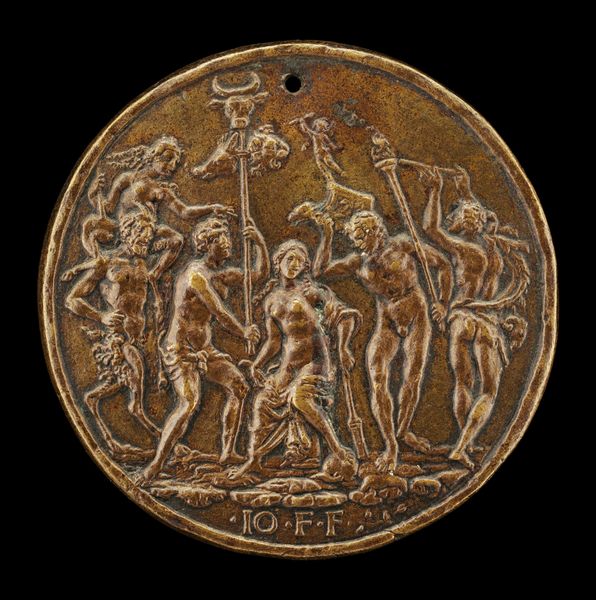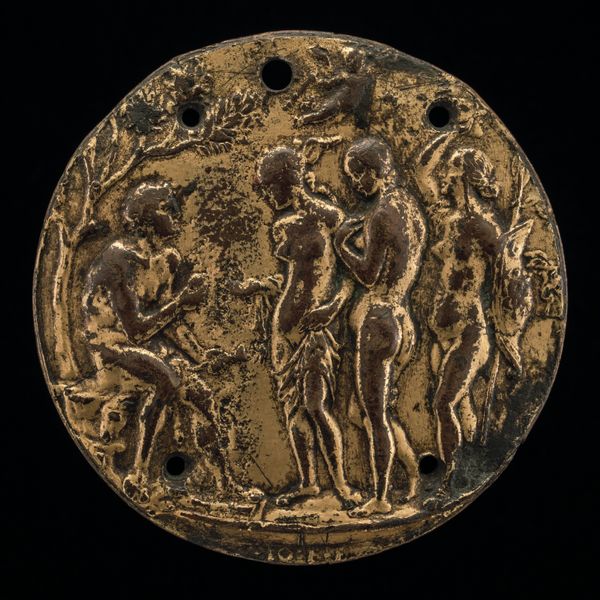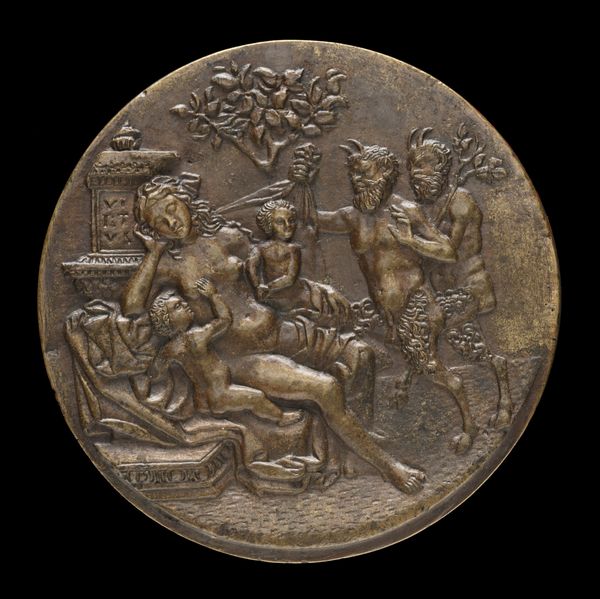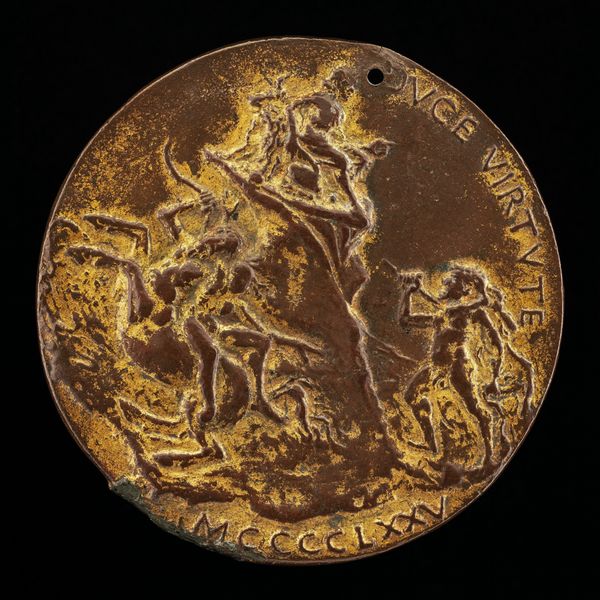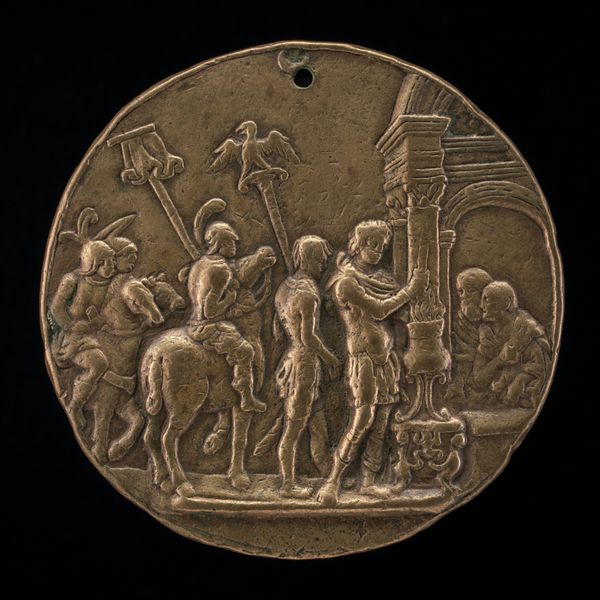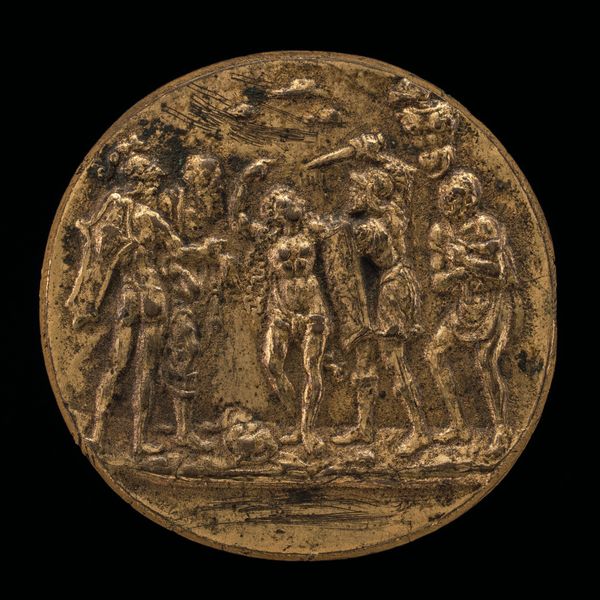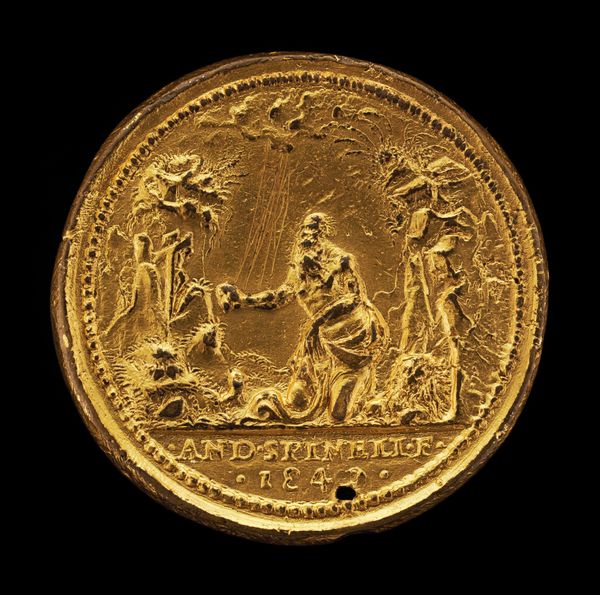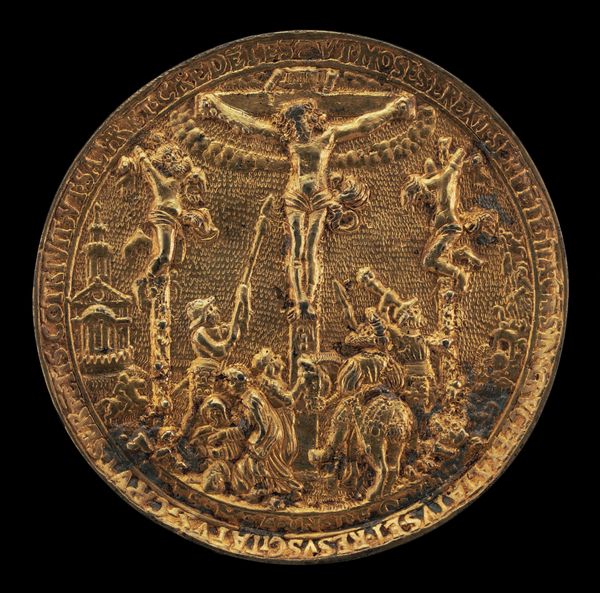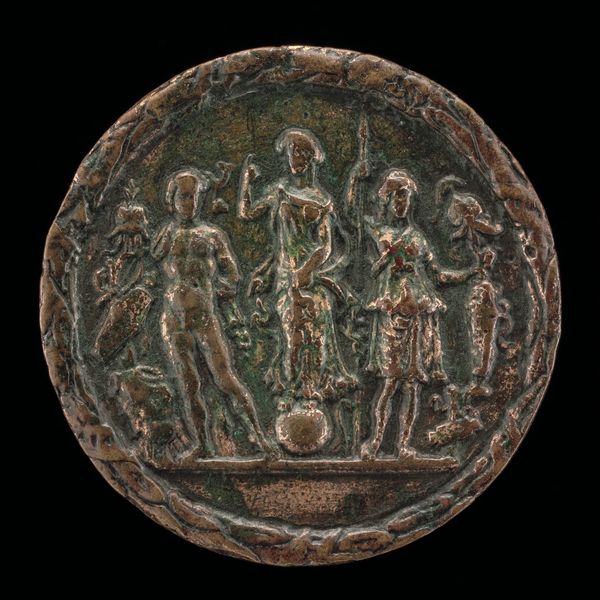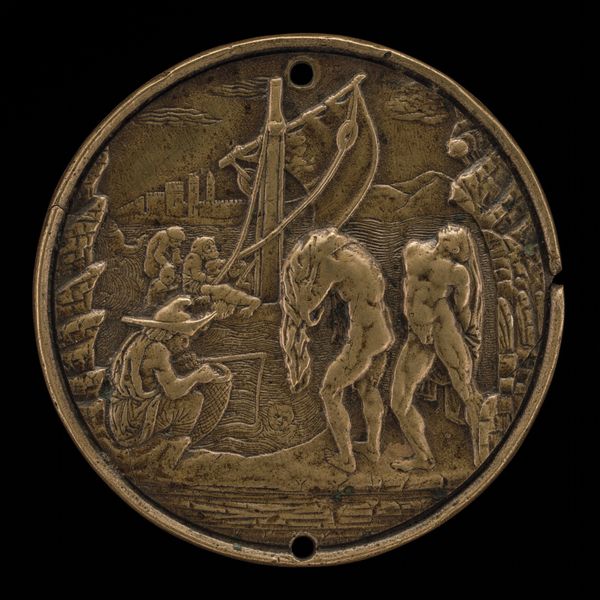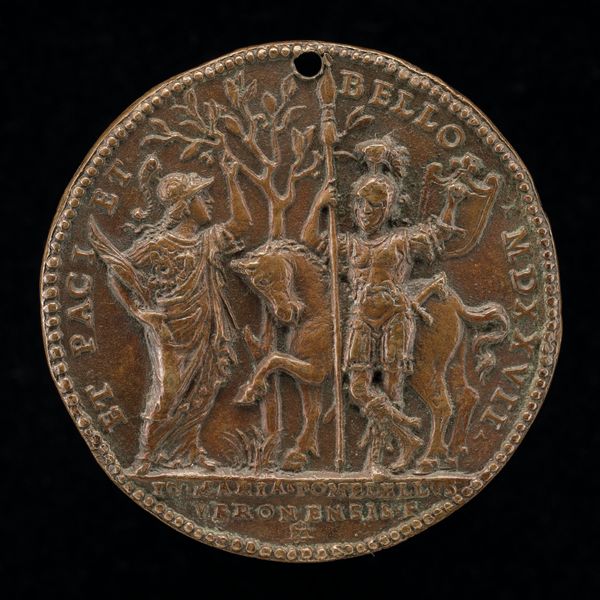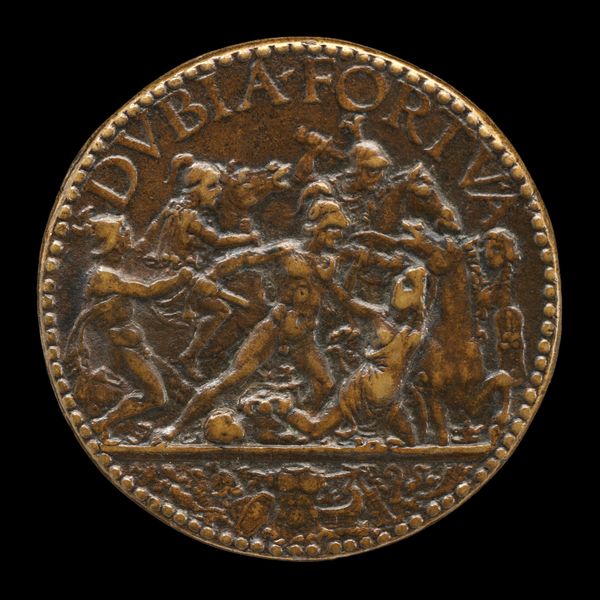
carving, metal, bronze, sculpture
#
carving
#
metal
#
bronze
#
figuration
#
11_renaissance
#
sculpture
#
carved
#
history-painting
#
italian-renaissance
Dimensions: overall (diameter): 5.45 cm (2 1/8 in.) gross weight: 30.84 gr (0.068 lb.)
Copyright: National Gallery of Art: CC0 1.0
Curator: Standing before us is a bronze piece, "Ariadne on Naxos," attributed to Master IO.F.F., dating back to the 15th century. Editor: The eye immediately registers the intricate density. So many figures compacted into such a limited space. There’s almost a sense of claustrophobia despite the narrative's implication of a deserted island. Curator: It portrays Ariadne's abandonment, a potent symbol of betrayal and isolation in Greek mythology, wouldn’t you say? We see her seated, seemingly despondent, as Bacchus and his entourage approach. Notice the details – Bacchus carrying his staff adorned with pinecone. Editor: Precisely! Observe how the artist manipulates the texture of the bronze to create a sense of dynamism. The composition circles back on itself. The play of light and shadow is essential in giving definition to those almost uniformly patinated bronze figures. It emphasizes the central figures of Ariadne and Bacchus and how the two connect in posture. Curator: That sense of implied movement could mirror Ariadne's transition from despair to eventual union with the god. The inclusion of putti is worth noting. Editor: An interesting perspective. Structurally speaking, the figures create a visual rhythm, their poses mirroring and contrasting each other. Semiotically, the use of depth to portray all characters as of similar scale collapses the sense of narrative focus, doesn't it? All the figures blend in complex pattern with no immediately distinguishable semantic hierarchy between the individuals. Curator: I see a conscious echoing of the Dionysian mysteries. Perhaps the overlapping characters represent ecstatic ritual practices, or a movement from order to ecstatic revelry, even though there's a prevailing sense of contained theatricality, don't you agree? Editor: Intriguing interpretation. The figures’ uniform surface distracts me; a flattening that obscures any hope of emotive expression within individual figures in the tableau. The surface tension dominates the ability of the depicted history. Curator: A lot to contemplate regarding historical perception then! Editor: Indeed. It invites continuous decoding!
Comments
No comments
Be the first to comment and join the conversation on the ultimate creative platform.
